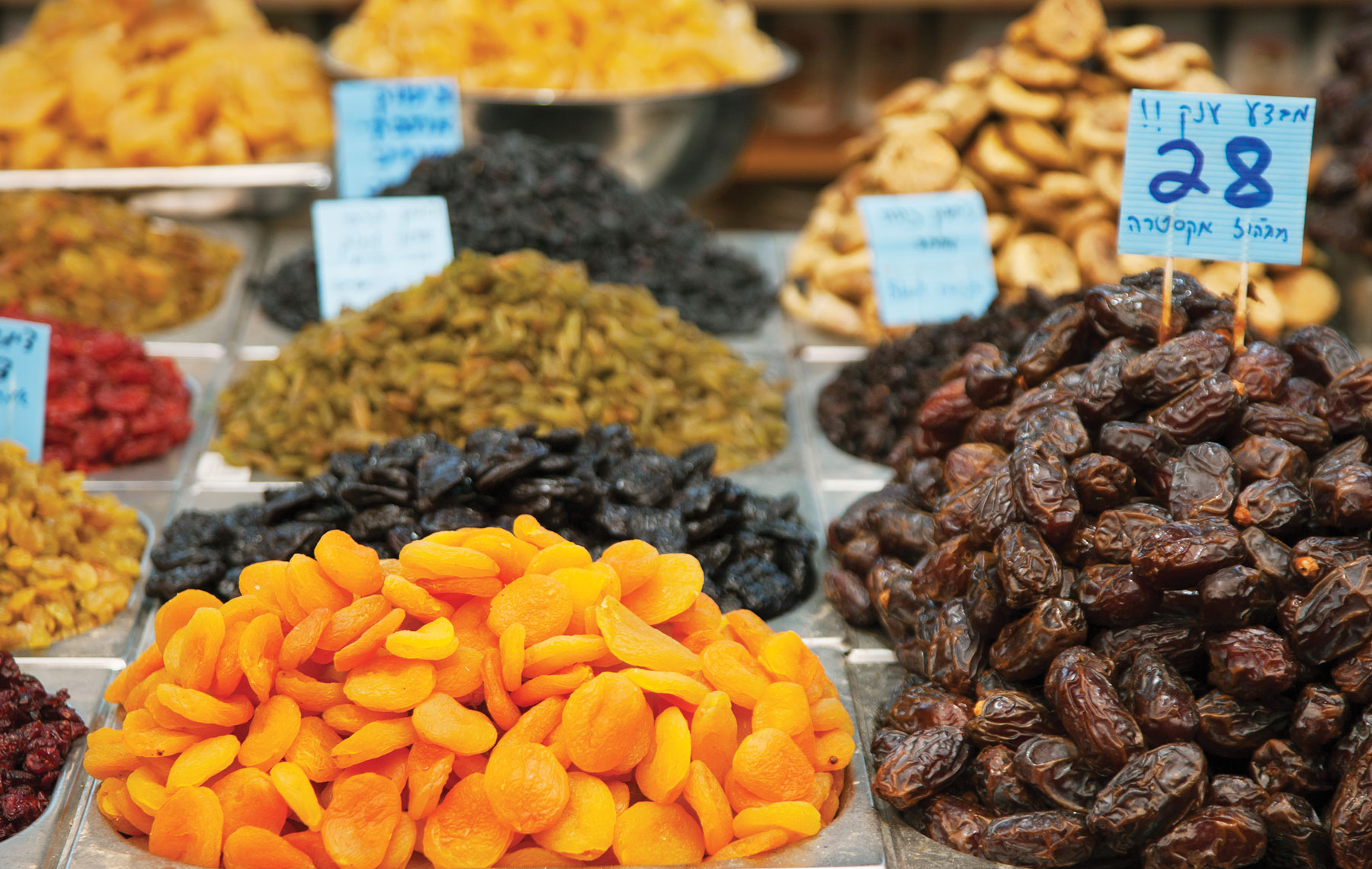
It’s hard to believe it’s been a year since I became food editor at the Jewish Journal but sure enough, the hallmarks of time passing are etched into the calendar by the Jewish holidays. I remember hugging my cousins in Israel this time last year at my aunt’s funeral and wondering how we would celebrate Rosh Hashanah without her food.
In our wonderful cover story this week about the delights of the Ashkephardic table, Debby Segura reminds us how powerful and symbolic this holiday is and how, when cultures collide, the food bar is raised to new levels of creativity while keeping traditions intact. This is certainly the case in Israel, where multi-ethnic food culture is the norm, but traditions like eating something sweet at the start of the Rosh Hashanah meal endure.
As a product of an Ashkenazi and Sephardic household, but also one in which my Israeli parents raised me in a third culture, American, I find it difficult to overstate the confusion I felt as a child during the High Holy Days. On the one hand, my Romanian mother’s Ashkenazi tastes included blander, sweeter things, but on the other hand, my father’s Sephardic roots as a Bulgarian dictated that we never mix sweet and savory in one dish, unless the natural sweetness of an ingredient such as caramelized onions happened to mingle with the savory qualities of chicken wings.
Then there was the American-Jewish Ashkenazi palate of my parents’ best friends while I was growing up, both of whom stayed true to their brisket, tzimmes and gefilte fish routine year after year. Add to that the fact that my mother’s Bulgarian sisters-in-law taught her to cook my father’s soul food, and you get a good idea of how confused I was about our food traditions.
On the one hand, I knew it was special when my mother cooked Sephardic dishes and blew the minds and taste buds off of my parents’ Ashkenazi friends. On the other hand, I was a little miffed when I went to Ashkenazi-American households and discovered blintzes and kugel. Where has this been my whole life, I would think to myself.
The only common denominator seemed to be the chicken soup. But even that was confusing. While my father would thumb his nose at my mother’s and my love for knaidlach or matzo balls, he would load his bowl of soup with lemon and black pepper. While my mother would break matzo into her soup and wait for it to get soggy before eating it, my father and I would make fun of her and put spicy Bulgarian lutenitsa hot sauce all over our matzo.
The end result of this bipolar food mixing that went on in my household was exacerbated by the fact that when we went home to Israel, there was a definite delineation of holiday food at our celebrations. My mother’s family always laid out an Ashkenazi spread: Rice, potatoes and carrots were their side dishes of choice along with jellied carp with enough sugar in the stock for my father to lament. But at my father’s family occasions, stuffed eggplant, onions and grape leaves abounded, along with fish in spicy tomato sauce, bamia (okra), preserved lemon, sour soups and oxtail.
It didn’t dawn on me until I opened my second restaurant, a Mexican-Asian fusion joint in Uganda, called Lotus Mexicana, that this Ashkephardic upbringing had not only affected my palate but my view of the world. Not only had growing up in a mixed household taught me to try things before determining I didn’t like them, traveling with this attitude had opened my taste buds to flavors and combinations of foods.
In the first draft of my extensive menu at Lotus Mexicana, I had more than 100 fusion dishes ranging from plantain fried rice with guacamole to smoked salmon ceviche with mango and pickled onions. To this day, there is no flavor combination I enjoy more than sweet with salty, followed as a close second by sour and spicy and then sweet and spicy. In my bakery, even my chocolate chip cookies are finished with a flourish of flakey sea salt and my dulce de leche caramel is always salted.
One year in Israel, I decided to invite both sides of the family, my mother’s and father’s, to a special-occasion meal. I resisted any offers to bring food, as is usually the custom when we have large family gatherings. Although I didn’t stick to a theme, I took a chance on a few dishes that mixed sweet and savory, one of which is for a lamb tanjia (recipe in next week’s issue) with dried sweet fruit and honey. I made sure not to tell my cousins on my father’s side what was in the dish so that they would not steer their parents away from it before tasting. I’m sure you’ve already guessed that everyone loved the lamb and both sides of the family asked me for the recipe, even the Sephardic palates who were the most vehement about not mixing salty with sweet.
They say too many cooks spoil the broth but, in my experience, there is no such thing as too many cooks. Perhaps my luck growing up in a mixed household, and in another land from the one of my birth, gave me part of the magic formula for life in and out of the kitchen. Being adventurous, taking chances, learning from those who came before me and not labeling anyone or anything before knowing or trying are certainly good rules to live by.
But more importantly, when I share my people’s traditions with my customers and friends and explain to them the significance of the symbolism behind why we eat these foods during a certain time of the year, I’m doubly blessed by gratitude for having tasted so many combinations of cultures. When I braid my round challah this Rosh Hashanah and I explain to my customers or my friends the symbolism behind it and that of the honey and apples we will eat, I’m part of that circle of life that’s kept all people rooted since the beginning of time.
Just as we all are — I’m part fusion and I’ve become a symbol of continuity.
Yamit Behar Wood, an Israeli-American food and travel writer, is the executive chef at the U.S. Embassy in Kampala, Uganda, and founder of the New York Kitchen Catering Co.























 More news and opinions than at a Shabbat dinner, right in your inbox.
More news and opinions than at a Shabbat dinner, right in your inbox.